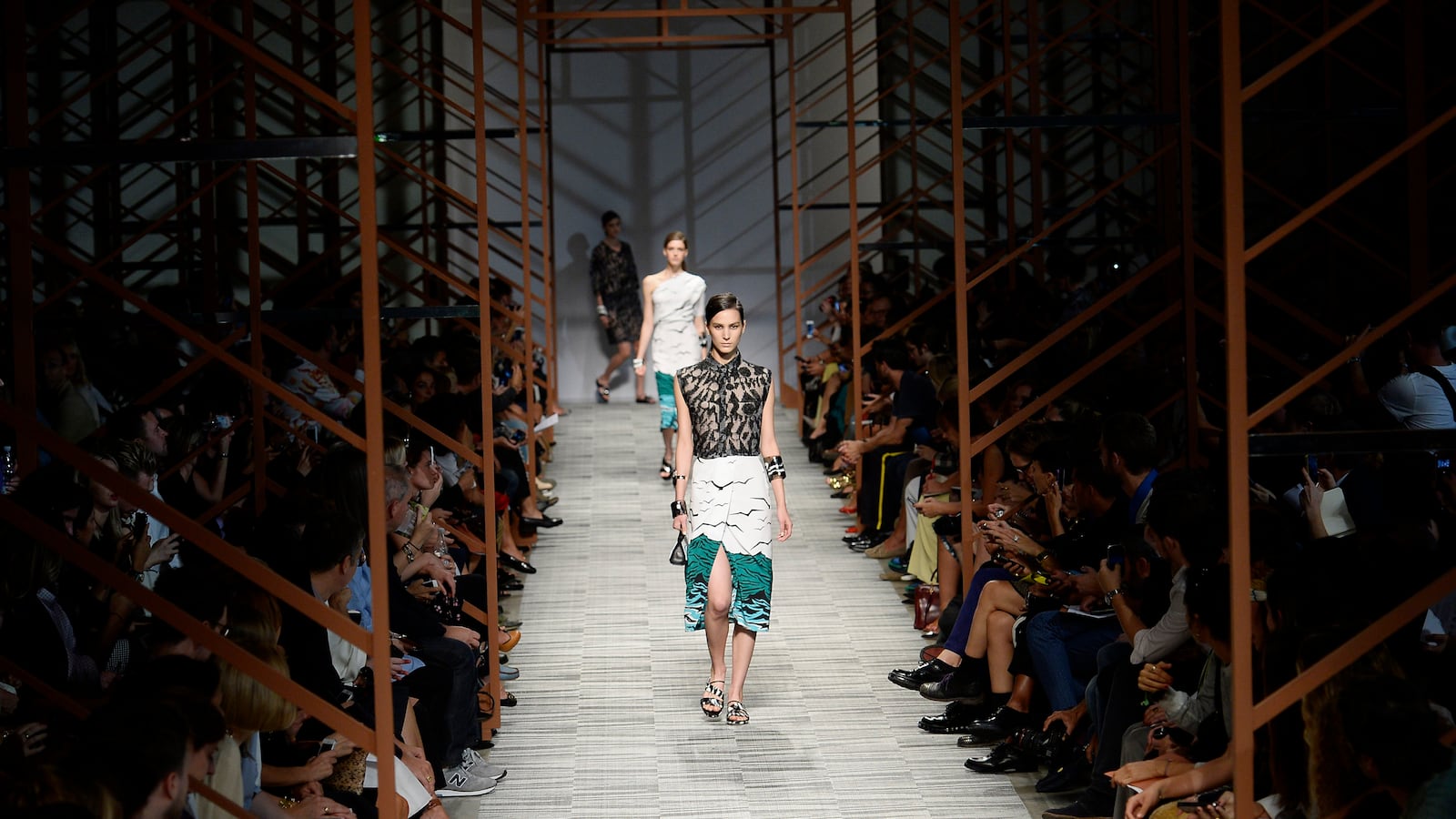
Missoni’s Summer 2014 show took place on Saturday in a vast Milan warehouse. But the show transported show-goers to old Japan, with designs covered in Japanese pop prints, inspired by iconic 18th century ukiyo-e woodcut art (such as Road to Tokaido and Six Views of Mount Fuji.)
The so-called “pop’n’ xotic” collection, designed in bright poppy colors, including turquoise, pinks and purples, continued on to India -- with sari-sarongs mixed with some of the house’s traditional woven knitwear looks. Think a sari in silk crepe paired with a logoed jacquard mesh-knit shirt.
Designed for women who like to travel, there were striped knit mesh sarongs in purple, orange, and lilac, with short jacquard-knit jackets.
Bright beautiful colors, stripes, prints and knits were repeatedly mixed up to form eye-catching patterned looks. The stripes on a skirt, paired with a busy knit-stitch on the jacket in variations on purple and orange, created an electrifying buzzed-up blend of patterns throughout the collection.
Glam came into play in the form of a figure-hugging lacquered rayon cloth skirt in turquoise that looked like sexy plastic. It was paired with a sweater designed like an exaggerated version of a V-neck made in an iridescent knit.
More traditional sarong looks were counterbalanced with several other clubby pieces, like a short purple jacket made of lacquered rayon cloth, which was worn with a logoed jacquard mesh knit pencil skirt.
Silhouettes were linear and surface textures were re-worked, with see-through sequins, embossed embroidery and degradè fringed bands – that looked on one design like a fragile string hammock attached to an asymmetrical panel dress.
These fringe bands were also strung in horizontal form across a cotton-knit silk dress, as if suspended on a weaving loom.
Eclectic mixes of stripes and busy patterns in rainbows of pretty colors, reminded one of the vibrant colors in play in India and Japan, from saris to kimonos, or the cheerful outfits of traditional African women, and as such were far removed from a more subdued Western aesthetic.
Eventually these bright colors gave way to a series of black-and-white ensembles, which also featured busy juxtapositions of stripes and patterns, like a jewel top named so because it was covered in a fringe of small cut beads, which was paired with a sarong in cotton poplin, decorated with a wave-like print.
Logos were worked into designs, like a pencil skirt in cotton gauze covered in a PVC logo, with a pleated silk in the slit at the back.
The house called the collection a “contemporary interpretation of fashion heritage.” Emphasizing its heritage, the show took place in a cage-like structure that looked as if it could have been woven in metal by in-house artisans.






